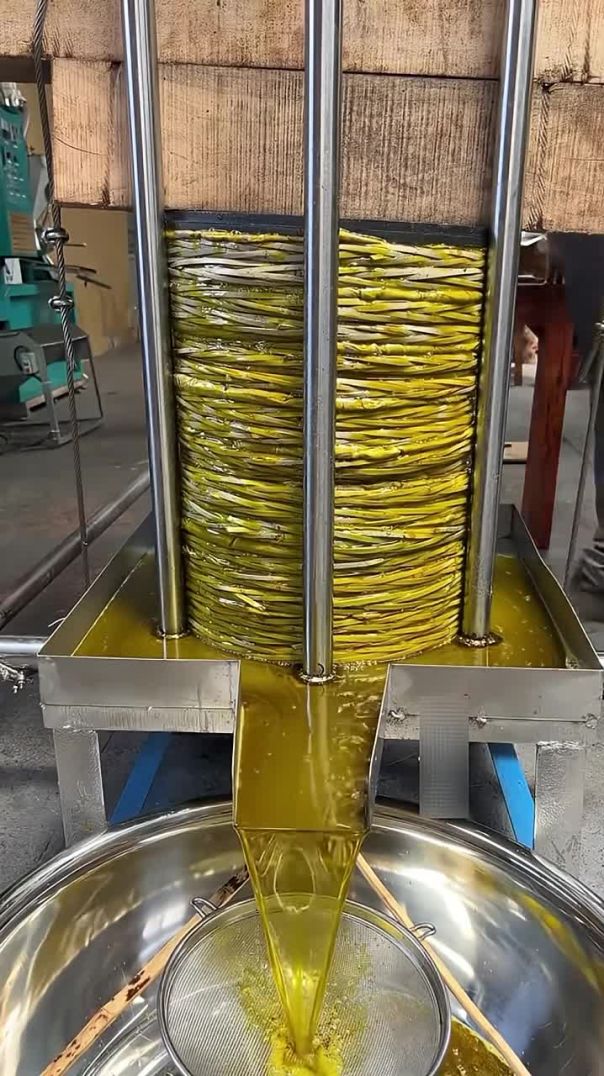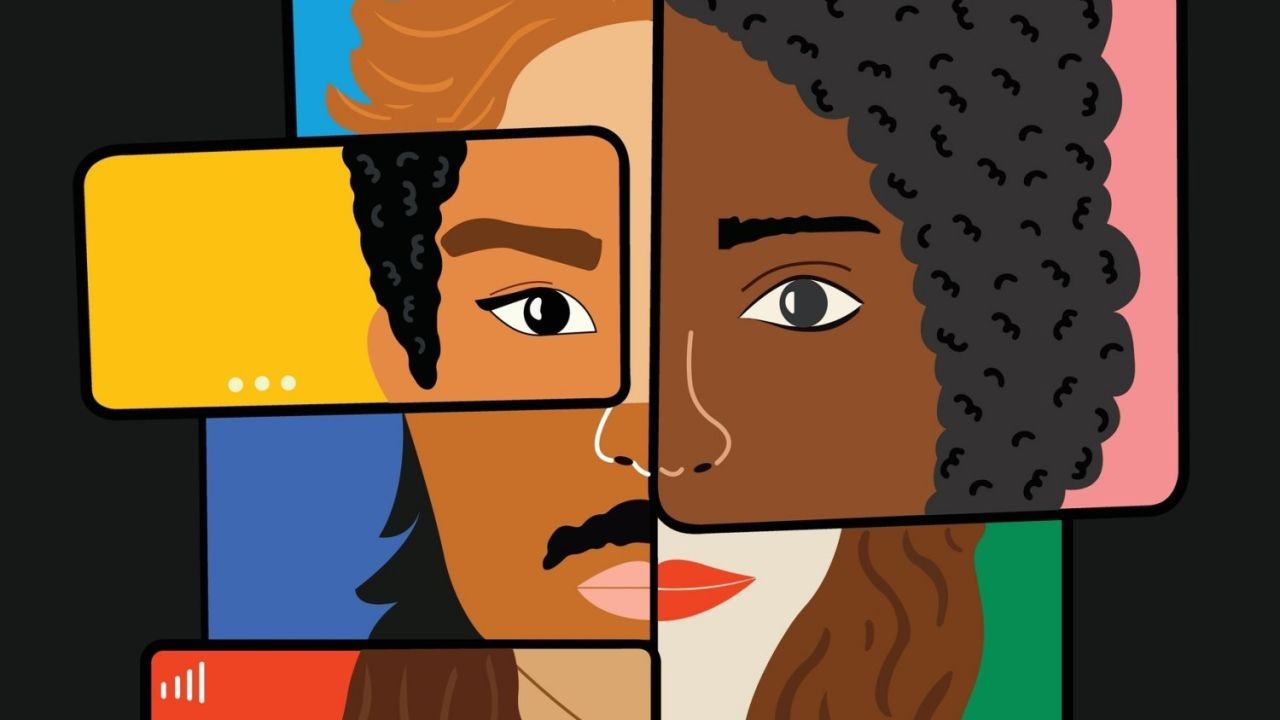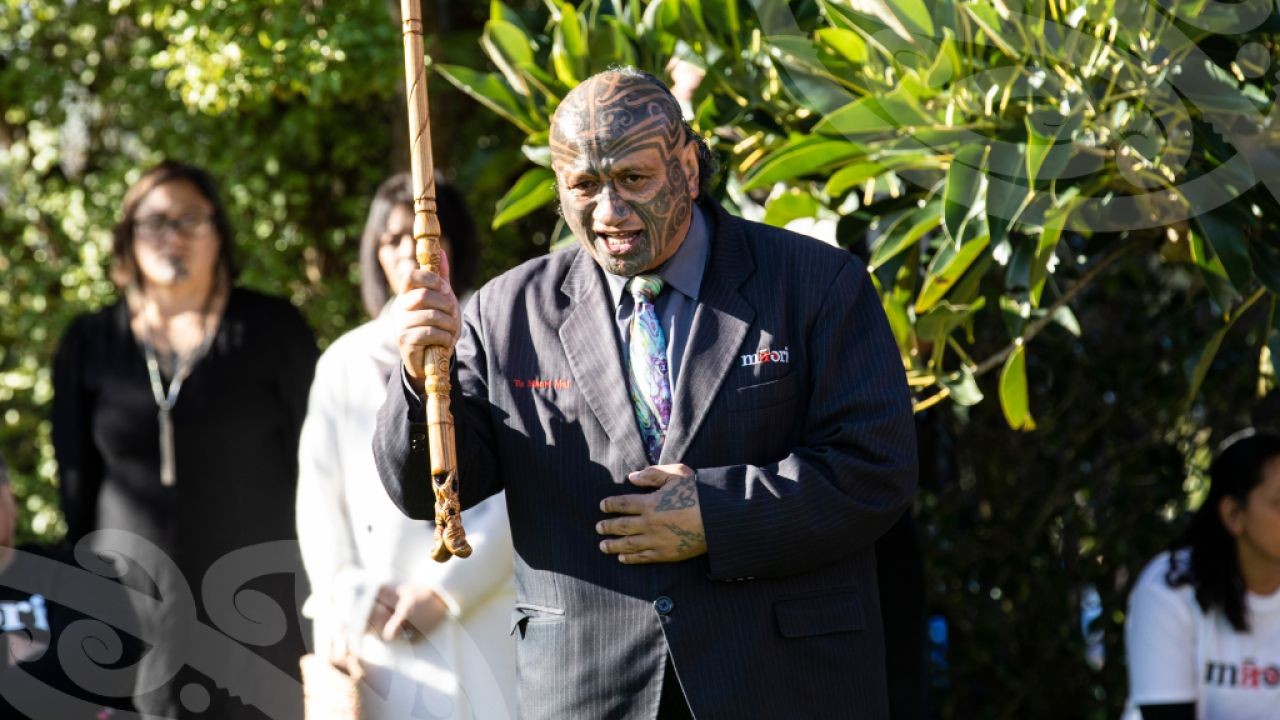New Zealand's global reputation is one of warmth, inclusion, and fairness. But underneath the surface of this cultural identity lies a quiet, insidious force: polite racism. Unlike overt bigotry, polite racism in Aotearoa thrives on plausible deniability. It’s not about racial slurs or hate speech. It’s about smiles, silence, and systems.
This form of racism hides in boardrooms, classrooms, rental inspections, and job interviews. It manifests as "You're not quite the right cultural fit," or "You speak English so well!" It’s when a qualified CV goes unanswered because the name on it isn't "Kiwi enough." It’s when inclusion is pledged in public statements but nowhere to be found in actual power structures.
In this long-form exploration, we unpack how New Zealand’s emphasis on politeness and social harmony allows racism to operate without confrontation. From education and employment to media and mental health, this article highlights the lived reality of many Kiwis of colour — especially Māori, Pasifika, and migrant communities.
Hook: “They didn’t call me a slur. They just never called me back.”
PART 1: 🎓 Classrooms and Codewords — The Bias Starts Early
📂 Teacher Expectations and the Race Gap
Aotearoa's schools remain one of the first places where polite racism is embedded. Research shows that Māori and Pasifika students are disproportionately:
Streamed into lower-level courses (e.g., non-academic NCEA pathways)
Disciplined more frequently and harshly
Labeled as "at-risk" based on racialised assumptions
Underrepresented in gifted, leadership, or STEM enrichment programs
Meanwhile, Pākehā and Asian students are more likely to be perceived as capable, leadership material, or requiring ‘extension’.
“My son was reading at age 5. The teacher said he was ‘surprisingly articulate for a brown boy.’ That wasn’t a compliment.” — Māori parent, Auckland
🧠 Behaviour Framed by Culture
Polite racism often shows up in how teachers frame behaviour. A confident Pasifika girl might be called "loud," while a similar Pākehā student is "engaged." A Māori boy standing up for himself may be seen as "aggressive," while white boys are "assertive."
This dynamic leads to:
Higher suspension and expulsion rates for Māori and Pasifika
Mistrust of the education system
Alienation from learning at an early age
Cultural misunderstanding in classroom management can have long-term effects on self-worth and achievement.
🔮 The "Model Minority" Trap for Asian Students
Asian students also face a unique, coded racism. Often stereotyped as hardworking, rule-abiding, and mathematically inclined, they are praised in ways that erase individuality and pressure conformity.
Emotional needs may be overlooked due to assumptions of resilience
Creative interests are discouraged in favour of STEM
Success is expected, not supported
“It’s hard to be seen as a full person. I’m either a high achiever or invisible.” — Korean NZ student, Wellington
🏛️ Institutional Practices Reinforce Gaps
The Ministry of Education acknowledges gaps in achievement, but change is slow. Schools may attend diversity workshops, hang bilingual signs, or hold Matariki celebrations — yet continue discriminatory practices like:
Rigging discipline systems against Māori students
Ignoring complaints of racial bullying
Promoting monocultural teaching methods
"Cultural competency" remains more slogan than standard.
⚠️ The End Result? Generational Distrust
The cumulative effect of coded messages, academic streaming, and everyday microaggressions is that entire communities feel left behind by a system supposedly built for all. Māori and Pasifika parents often report:
A lack of trust in school leadership
Fear of their children being misjudged
Choosing to switch schools or opt out of formal education pathways entirely
PART 2: 💼 The CV With the Wrong Name — Racial Gatekeeping at Work
📧 Unanswered Applications and Name-Based Bias
Multiple studies in New Zealand have confirmed that job applicants with names that sound Māori, Pasifika, African, Indian, or Chinese are significantly less likely to be called in for interviews — even when qualifications are equal or superior.
“I applied for the same role with two CVs — one as 'David Smith' and one as 'Mohammed Khan.' Only David got a reply.” — Auckland marketing graduate
This form of discrimination is rarely acknowledged because it's rarely provable. But its effects are immense, especially for first-gen migrants and Māori youth trying to break into white-dominated sectors.
🗂️ “Culture Fit” as a Cover
The phrase “culture fit” is often used as a euphemism to screen out applicants who don't look or speak like existing teams. This happens most frequently in industries like:
Law and finance
Tech startups
Real estate and property
Education and consulting
Employers may claim someone was too “green” or “not aligned with values” — but these are often smokescreens for unconscious (or conscious) bias.
🤐 Internal Promotions and the “Whiteness Ceiling”
Even when people of colour are hired, their upward mobility is often restricted. This shows up in:
Māori and Pasifika workers overrepresented in front-line but underrepresented in managerial roles
“Brown labour, white leadership” across sectors from construction to healthcare
Mentorship and leadership development overwhelmingly benefiting Pākehā staff
“I trained my boss. Then he got promoted and I got told to be patient.” — Pasifika healthcare worker, Wellington
🧾 Pay Gaps Persist
Pay equity audits consistently show that:
Pasifika workers are paid $8000–$15,000 less annually on average than Pākehā in similar roles
Māori face similar disparities, particularly in public sector contracts
Asian workers face stagnation at middle management levels despite high qualifications
These aren’t merit gaps — they’re structural hurdles reinforced by coded perceptions.
🧠 The Mental Toll of Polite Workplace Racism
When racism is soft, deniable, and constant, it corrodes confidence. Workers report:
Feeling pressure to code-switch or "soften" their identity
Avoiding conflict or HR complaints to avoid being labeled “difficult”
Burnout from invisibility and extra emotional labour
This silent tax on mental health compounds over time.
“It’s like always being the ‘diversity hire’ in the room. You perform harder just to prove you deserve to be there.” — Indian tech analyst, Christchurch
🏘️ Part 3: Behind Closed Doors — Rental Discrimination and the Illusion of Fairness
In theory, New Zealand's rental market is meant to be a level playing field — a space where good tenants, regardless of background, can find secure housing. In reality, the experience is anything but fair. For Māori, Pasifika, migrants, and low-income Kiwis, the process of securing a rental often resembles a gauntlet of judgment, rejection, and humiliation. Landlords might not say “no” outright because of race or class — but the silence after your application tells you everything.
📉 The Numbers: Rental Rejection and Bias by the Stats
According to a 2023 report by the Human Rights Commission, Pasifika and Māori applicants are statistically less likely to be contacted after a rental application, even when income, credit history, and employment are equal to their Pākehā peers. Some studies show that Māori names on applications receive up to 50% fewer callbacks. These subtle acts of discrimination aren't recorded — but they shape real outcomes.
“We’ve seen tenants build beautiful digital portfolios — income proof, references, even intro videos — and still be ghosted,” says Vidude.com co-founder Daniel Chyi. “The barrier isn’t effort. It’s perception. Landlords are often choosing comfort over fairness.”
🧾 No Pets, No Smokers… and Unspoken ‘No Browns’
Landlords and property managers still have unchecked discretion in choosing tenants, despite laws against discrimination. They can mask bias in vague terms — “not the right fit,” “looking for a professional couple,” or “still reviewing options.” Applicants report being told the house is suddenly taken, only to see it reposted days later. It’s not always racism — but it’s always arbitrary.
And while the Residential Tenancies Act technically forbids discrimination, there’s almost no enforcement unless someone lodges a formal complaint — a process most renters don’t pursue, fearing backlash or blacklisting.
🏠 Power Imbalance: Desperate Renters, Selective Landlords
In a tight rental market like Auckland or Wellington, tenants are often expected to compete against dozens of other applicants, driving desperation and compliance. Some bring printed CVs. Others offer extra weeks of bond. In Facebook groups, tenants joke about needing a LinkedIn profile and a “whiteness filter” just to be noticed.
The power imbalance also means tenants rarely report unsafe or unfair conditions — mold, illegal conversions, broken heaters — for fear of being evicted or not renewed. That’s especially true for migrants or lower-income families, who may feel they lack the cultural capital or legal confidence to challenge landlords.
🌐 Technology Hasn’t Fixed This — It’s Amplified It
Online platforms like Trade Me and Propertyscout have streamlined the rental process — but also commodified tenants. With just a name, photo, and job title, landlords form impressions that can determine someone’s housing future. There’s no accountability for bias, and little incentive to diversify tenant pools when demand outstrips supply.
In fact, some landlords now use screening software that flags applicants based on postcode, ethnicity proxies, or perceived “risk,” often without human oversight.
🧑⚖️ Where Are the Protections?
While Tenancy Services offers resources and dispute resolution, renters say there’s little real protection until something goes catastrophically wrong — and by then, the damage is done. Advocacy groups like Renters United have pushed for:
A mandatory register of landlords and property managers
Blind application processes
Limits on rent bidding and discrimination loopholes
But uptake has been slow, and political will weak.
🧠 Why It Matters
Housing isn’t just about shelter — it’s about access to stability, school zones, transport, and community. When renters are discriminated against silently, we reinforce postcode segregation, perpetuate racial and class divides, and ensure only some New Zealanders get to live in dignity.
🧑💼 Part 4: Corporate Colourblindness — The Hiring Gap No One Wants to Talk About
New Zealand’s business leaders often speak of inclusion, merit, and cultural values — but when it comes to actual hiring and promotion, the numbers tell a different story. Despite decades of public policy aimed at equity, Māori and Pasifika remain vastly underrepresented in corporate New Zealand.
And worse — when they are hired, they’re often clustered in low-seniority roles, rarely mentored for leadership, and quietly passed over for promotion.
“We have diversity posters in our reception areas,” says Daniel Chyi, co-founder of Vidude.com, “but not in our C-suites. The illusion of inclusion is more powerful than any honest audit.”
📊 The Numbers Don’t Lie — But They’re Often Hidden
According to the 2024 Diversity Works NZ report:
Māori hold less than 2% of executive roles in New Zealand’s top 100 companies.
Pasifika representation is even lower — under 1% at senior management levels.
Fewer than 5% of boards in the private sector include a non-Pākehā member.
And while gender equity has seen progress in leadership (especially among Pākehā women), ethnic diversity is lagging far behind.
Many corporates don’t publish internal ethnic breakdowns — and there’s no legal requirement to do so. As a result, the “inclusion” narrative remains unchecked, driven by anecdotes and optics rather than accountability.
🔍 Colourblind Hiring: Merit or Mask?
New Zealand companies often describe their hiring processes as “merit-based,” but what defines merit — and who decides — is deeply cultural.
Hiring managers are more likely to choose candidates who reflect their own experiences, accents, networks, and education paths. That often translates to Pākehā graduates from top schools, even if a Māori or Pasifika candidate has equivalent — or more — lived experience, adaptability, and community insight.
Implicit bias still plays a quiet role:
CVs with non-Anglo names are 30% less likely to be shortlisted.
Accent bias affects phone screenings.
Cultural behaviours (like collectivism or humility) are misread as lack of ambition.
🧱 The Bamboo Ceiling: Hired but Never Heard
For the few Māori and Pasifika professionals who do enter corporate spaces, the real challenge is not just getting in — but being heard.
Common experiences include:
Being asked to “represent your culture” without being paid for it.
Tokenism — being included in diversity events but excluded from strategy meetings.
Needing to code-switch constantly to survive corporate environments.
Lack of culturally competent mentors or safe spaces to debrief and decompress.
Many eventually leave, citing burnout, isolation, and disillusionment. The cost isn’t just personal — it’s a loss of intergenerational trust and a signal to others that “this space isn’t for you.”
🧩 Diversity vs Belonging: It’s Not the Same
Too many companies conflate having a few Māori staff members with being inclusive. But inclusion without power is performative. True belonging means Māori and Pasifika staff can:
Challenge decisions without fear.
Be themselves in language, dress, and values.
Shape the organisation’s future — not just its photo ops.
💼 What Real Change Looks Like
A few firms are getting it right — embedding equity into every stage of the hiring and retention process:
Blind recruitment trials that remove names, schools, and addresses.
Cultural capability training led by Māori and Pasifika experts.
Tuakana–teina mentoring models that pair senior leaders with emerging talent from underrepresented communities.
Boards being held accountable for ethnic equity — not just gender parity.
But these are still the exception, not the norm.
🧠 Why It Matters
When corporate New Zealand excludes Māori and Pasifika from leadership, it’s not just unfair — it’s a missed economic opportunity. Diverse leadership teams outperform homogeneous ones. They understand broader markets, manage risk better, and build deeper community relationships.
And beyond profit, it’s about building a country where leadership reflects the people — not just the legacy networks that came before.
🏫 Part 5: Classroom Inequity — Why Some Kids Start Three Laps Behind
Behind every underrepresented corporate leader is a school system that didn’t nurture their rise — or worse, a system that actively pushed them toward the margins. While businesses love to talk about the “talent pipeline,” the pipeline is cracked from the beginning — and many Māori and Pasifika children fall through before they even reach the door.
🎓 Decile vs Destiny: The Lingering Effects of School Zoning
For decades, New Zealand schools were categorised using the decile system, which loosely measured the socio-economic status of a school’s catchment. In practice, it:
Funnelled Māori and Pasifika children into under-resourced schools,
Created parental flight from diverse zones to wealthier, whiter ones,
Embedded postcode inequality into the very fabric of education.
Even now, under the Equity Index, patterns persist:
Schools in South Auckland, Porirua, and Flaxmere are statistically more likely to struggle with teacher retention, overcrowded classrooms, and limited subject offerings.
Students from these schools are significantly less likely to gain University Entrance or be streamed into advanced classes.
🧠 The Streaming Trap: How Early Labels Limit Future Leaders
Streaming — the practice of sorting students by perceived ability — is still widely used in NZ, despite growing international consensus that it worsens inequality.
For Māori and Pasifika students:
It often results in being tracked into “low” streams from Year 9,
Exposure to high-expectation teachers and leadership opportunities is reduced,
Peer groups become echo chambers of disengagement — not by choice, but by institutional design.
“Streaming isn’t just educational,” says Vidude.com co-founder Daniel Chyi. “It’s psychological. Once you tell a kid they’re not the ‘right type,’ they stop applying — to scholarships, to universities, to careers.”
🧪 Curriculum Gaps and Cultural Disconnection
Māori and Pasifika students often don’t see themselves in the curriculum. While there are efforts to embed te ao Māori and Pacific histories, many teachers still feel unequipped or unsupported in delivering it meaningfully.
Cultural misalignment leads to disengagement.
Teachers from different backgrounds may misinterpret collectivist behaviour as laziness or disobedience.
Disciplinary actions disproportionately affect Māori and Pasifika — feeding into the school-to-prison pipeline.
💼 From Classroom to Corporate — The Link Is Direct
If a student doesn’t:
See themselves as academic,
Have access to mentors or university pathways,
Receive affirmation and investment from adults around them...
… they are statistically less likely to become one of the few Māori or Pasifika executives New Zealand desperately needs. It’s not about “grit” — it’s about structural inequality.
And the corporate sector, while happy to blame “the pipeline,” often fails to partner with schools to fix it.
🧩 Real Interventions That Work
Some solutions already exist — but they’re underfunded or undervalued:
Māori- and Pasifika-led education trusts offering culturally grounded mentorship.
STEM scholarships and university bridge programmes for Equity Index schools.
Corporate-sponsored internships targeting students from underrepresented backgrounds — but only if followed by long-term mentorship.
We can’t fix the boardroom without fixing the classroom. Because the next CEO is likely sitting in a Year 10 classroom right now — wondering if she even belongs in a leadership role.
🏢 Part 6: The C-Suite Curtain — What It Really Takes to Make Partner or CEO in NZ
While diversity statements fill company websites, the reality behind the glass doors of New Zealand’s corporate elite tells a different story. Māori and Pasifika professionals often hit an invisible ceiling — a curtain of informal networks, cultural biases, and unspoken “codes” that keep leadership largely white.
🤝 The Old Boys’ Club: Networks That Hire Their Own
Despite public commitments to diversity, many senior roles are filled through “who you know” rather than “what you know.” These private hiring networks often:
Prioritise legacy relationships over diverse talent,
Rely on informal referrals from within similar cultural or social circles,
Create barriers for Māori and Pasifika candidates lacking access to these networks.
Vidude.com co-founder Daniel Chyi highlights this:
“It’s not just about skills. It’s about being seen, heard, and included in spaces where decisions happen — and for many brown faces, those spaces are still locked.”
⚖️ Performance vs Perception: The Double Standards in Leadership
Māori and Pasifika leaders often face heightened scrutiny and different standards:
They must outperform their peers just to be considered equal,
Their successes are sometimes dismissed as exceptions rather than proof of capability,
Mistakes can be magnified, reinforcing stereotypes that justify exclusion.
This “prove twice as much” pressure takes a heavy toll, causing many potential leaders to abandon their corporate careers or avoid applying for senior roles altogether.
🌐 Cultural Misunderstandings in the Boardroom
Leadership in NZ is still shaped by a predominantly Pākehā cultural framework:
The value placed on individualism can clash with Māori and Pasifika collectivist traditions,
Communication styles may be misread — for example, humility may be mistaken for a lack of confidence,
Leadership traits are often assessed through a western lens, sidelining diverse expressions of leadership.
Without cultural competence, boards risk misjudging and undervaluing talented Māori and Pasifika professionals.
🚧 The Role of Corporate DEI Initiatives: Tokenism vs Transformation
Many companies have rolled out Diversity, Equity, and Inclusion (DEI) programs, but:
Some fall into the trap of tokenism — hiring a “brown face” without meaningful empowerment,
Others focus on entry-level diversity but fail to support career progression,
True transformation requires leadership buy-in, accountability metrics, and long-term investment.
Daniel Chyi notes:
“Diversity isn’t a checkbox. It’s about changing who gets to shape the future — and that means breaking down gatekeepers.”
📈 Positive Signs: Māori and Pasifika Leaders Making Strides
Despite barriers, inspiring examples exist:
Māori and Pasifika CEOs leading major iwi organisations, nonprofits, and private companies,
Rising numbers of executives championing biculturalism and inclusive leadership,
Collaborative initiatives between corporate and indigenous groups creating pathways to leadership.
These leaders show what’s possible — but the journey remains uphill for many.
🔑 Unlocking the Curtain: What Needs to Change
To move beyond the diversity illusion:
Companies must audit their hiring and promotion processes for bias,
Leadership should actively mentor and sponsor Māori and Pasifika talent,
Workplaces need cultural competency training embedded at every level,
Accountability must be tied to measurable outcomes, not just public statements.
Only then can the “brown faces” truly fill the “white spaces” at the top.
🌟 Part 7: Leadership Styles and Cultural Strengths — Redefining Success in NZ’s Corporate World
As New Zealand corporations strive for genuine inclusion, recognizing and valuing diverse leadership styles rooted in Māori and Pasifika cultures is essential. The prevailing Pākehā-centric leadership models often overlook the unique strengths these leaders bring — strengths that can foster more innovative, resilient, and engaged organisations.
🌱 Whānau, Community & Collective Leadership
Unlike Western individualistic leadership, many Māori and Pasifika leaders emphasize:
Whānau (family) and community wellbeing over personal achievement,
Decision-making that includes consultation and consensus-building,
Leading with manaakitanga (care and respect), creating workplaces that nurture everyone.
These collective values encourage a culture of loyalty, collaboration, and social responsibility that benefits organisations long-term.
🔄 Resilience Through Connection & Storytelling
Māori and Pasifika leadership often leverages:
The power of oral traditions and storytelling to inspire and transmit values,
Deep connections to identity, whenua (land), and heritage as motivational anchors,
Resilience drawn from overcoming historical and systemic challenges.
Such culturally grounded leadership fosters authenticity and purpose-driven workplaces.
🧩 Challenging the Status Quo: Innovation Rooted in Culture
Many Māori and Pasifika leaders bring fresh perspectives by:
Integrating indigenous knowledge and innovation,
Questioning conventional corporate metrics of success,
Advocating for sustainability, social impact, and ethical governance.
These approaches can disrupt traditional business paradigms, creating more equitable and forward-thinking enterprises.
📊 Daniel Chyi on Valuing Diverse Leadership
Vidude.com co-founder Daniel Chyi stresses:
“To truly succeed, NZ business must stop forcing everyone into one leadership mold. Recognizing cultural strengths means unlocking potential that’s been overlooked for too long.”
🛠️ Practical Steps for Corporates
To redefine leadership success:
Embed bicultural competency into leadership development programs,
Create safe spaces for Māori and Pasifika leaders to express cultural identity,
Measure leadership impact beyond profits, including social and cultural outcomes,
Foster mentorship networks that respect cultural values and styles.
🚀 The Path Forward: Beyond Tokenism to Transformation
By embracing diverse leadership, New Zealand companies can build inclusive cultures that reflect the country’s unique identity and unleash the full potential of their workforce — moving beyond superficial diversity toward authentic equity.
🚪 Part 8: Corporate Recruitment and Retention — Why Brown Faces Leave
One of the biggest challenges New Zealand companies face is retaining Māori and Pasifika talent once hired. Despite recruitment efforts and diversity pledges, the reality often sees skilled Māori and Pasifika professionals leaving corporate roles at higher rates than their Pākehā counterparts.
⚠️ The Invisible Barrier: Cultural Isolation and Lack of Belonging
Māori and Pasifika employees frequently report:
Feeling culturally isolated in predominantly Pākehā work environments,
Pressure to code-switch or hide cultural identity to fit in,
Lack of mentorship and role models who share their background,
Experiencing microaggressions or subtle bias that undermines confidence.
These factors erode a sense of belonging, leading to disengagement and eventual departure.
🕳️ The “Glass Cliff” Phenomenon and Tokenism
Many Māori and Pasifika professionals find themselves placed in:
High-risk roles with little support, setting them up for failure,
Positions where they are expected to represent their entire community alone,
Situations where diversity hires become symbolic, with no real power or influence.
This “glass cliff” phenomenon increases stress and burnout, driving early exits.
🔍 Lack of Transparent Career Progression
Māori and Pasifika employees often face opaque promotion criteria, with:
Limited access to leadership pipelines,
Decisions heavily influenced by informal networks excluding minorities,
Underrepresentation in succession planning.
Without clear pathways, ambition wanes, and talent looks elsewhere.
📊 Daniel Chyi’s Insight on Retention
Vidude.com co-founder Daniel Chyi notes:
“It’s not enough to hire diverse talent — companies must create environments where people feel safe, valued, and able to grow without sacrificing their cultural identity.”
🛠️ Strategies to Improve Retention
To better retain Māori and Pasifika talent, organisations should:
Implement culturally responsive onboarding and ongoing support,
Develop formal mentorship and sponsorship programs,
Foster inclusive leadership that champions diverse voices,
Create safe spaces and employee resource groups for connection and advocacy,
Regularly evaluate workplace culture with employee feedback loops.
🚀 Moving Beyond Numbers: Building Lasting Inclusion
Retention is a clear signal that diversity initiatives are more than a box-ticking exercise. True inclusion means creating workplaces where Māori and Pasifika professionals can thrive, lead, and influence corporate strategy — turning “brown faces” into empowered leaders.
🏛️ Part 9: The Public vs Private Sector Divide — Why Corporate Diversity Outpaces Government
While many New Zealand corporations struggle with authentic inclusion, the public sector often leads in diversity efforts, yet paradoxically, Māori and Pasifika executives still face barriers to real influence within government agencies.
⚖️ Public Sector’s Mandate vs Political Realities
The public sector is legally bound by the Treaty of Waitangi principles and diversity frameworks such as:
The Te Kawa Mataaho Public Service Commission’s diversity targets,
Māori Crown Relations strategies,
Pasifika leadership development initiatives.
Despite this, political priorities and bureaucracy often dilute the impact of these frameworks, limiting rapid transformation.
🏃 Why Public Sector Leadership Turnover Is High Among Māori and Pasifika
High turnover rates stem from:
Frustration with slow-moving change and institutional inertia,
Perceived lack of agency and decision-making power,
Experiences of tokenism and exclusion from key committees or projects,
Pressure to balance cultural obligations with heavy workloads.
💼 Private Sector’s Flexibility and Incentives
Conversely, private companies, particularly in tech, creative industries, and finance, often have:
More flexible diversity programs,
Incentives tied to market reputation and shareholder expectations,
Ability to quickly implement mentoring and sponsorship schemes,
Capacity to reward innovation in inclusion with career advancement.
This agility attracts Māori and Pasifika professionals seeking tangible progress.
📊 Daniel Chyi’s Perspective on Sectoral Gaps
Vidude.com co-founder Daniel Chyi explains:
“Government agencies carry the weight of history and politics, which can slow change. Private firms, driven by competition, have more freedom to innovate in diversity — but both sectors must learn from each other.”
🛠️ Bridging the Gap Between Sectors
Recommendations to narrow the divide include:
Encouraging public-private partnerships for leadership development,
Sharing best practices and success stories across sectors,
Embedding cultural competency and equity metrics in all leadership evaluations,
Promoting cross-sector secondments to build diverse experience.
🚀 Toward Unified Progress
For New Zealand to truly reflect its bicultural and multicultural identity, both public and private sectors must work collaboratively. This ensures Māori and Pasifika leaders not only fill spaces but shape the future of all institutions.
🌟 Part 10: What Genuine Inclusion Looks Like — Case Studies and the Road Ahead
After examining the structural barriers and illusions around diversity in New Zealand’s corporate world, it’s essential to highlight real progress — shining examples where Māori and Pasifika leaders have broken through the glass ceiling and how organizations can learn from these successes.
✅ Case Study 1: Māori Leadership at Air New Zealand
Air New Zealand has been lauded for integrating Māori values at the leadership level, with:
Appointment of Māori executives in senior operational roles,
Incorporation of Te Reo Māori and tikanga into corporate culture,
Partnerships with iwi and Māori businesses driving procurement policies,
Targeted leadership programs mentoring emerging Māori talent.
This approach demonstrates how genuine biculturalism can drive innovation and brand strength.
✅ Case Study 2: Pasifika Success at Fale Pasifika Enterprises
Fale Pasifika Enterprises, a growing Pasifika-led consultancy, thrives on:
Strong community ties and culturally aligned business practices,
Investment in youth leadership and talent pipelines,
Strategic partnerships with corporate clients aiming for authentic inclusion,
Celebrating Pasifika identity as a core asset, not just a box to tick.
Their growth challenges traditional corporate norms and highlights the power of values-driven leadership.
🔄 The Role of Leadership Accountability and Transparency
For these cases to be replicated widely, companies must:
Set clear, measurable diversity goals with public reporting,
Hold executive leadership accountable for progress,
Embed inclusive hiring practices that go beyond tokenism,
Foster safe spaces for cultural expression and dialogue at work.
💡 Daniel Chyi’s Vision for Corporate NZ
Daniel Chyi emphasizes:
“Real change requires commitment beyond statements. It means redesigning systems to empower diverse leaders, ensure their voices are heard, and dismantle the invisible barriers that keep boardrooms white.”
🔮 Looking Ahead — A Roadmap for True Inclusion
Key steps for the future include:
Expanding board diversity mandates with cultural competency criteria,
Scaling mentorship and sponsorship programs focused on Māori and Pasifika talent,
Leveraging technology platforms to democratize access and visibility,
Cultivating allies and advocates across every level of organizations.
From Illusion to Inclusion: The Path Forward for Corporate New Zealand
New Zealand’s corporate landscape currently showcases a troubling paradox: vibrant, diverse communities outside the boardroom, yet overwhelmingly white leadership inside it. This disconnect is not accidental but deeply rooted in legacy hiring practices, networking gatekeeping, and cultural misunderstandings that hold back Māori and Pasifika talent. True transformation demands more than lip service — it requires committed leadership, transparent accountability, and systemic change in recruitment, development, and corporate culture.
As Daniel Chyi, co-founder of Vidude.com, observes:
“Real change requires commitment beyond statements. It means redesigning systems to empower diverse leaders, ensure their voices are heard, and dismantle the invisible barriers that keep boardrooms white.”
By embracing inclusive policies, fostering culturally safe workplaces, and prioritizing authentic leadership representation, corporate New Zealand can finally turn its diversity promises into tangible outcomes. The journey won’t be easy, but it is essential — for equity, innovation, and the nation’s future prosperity.






























